Related Research Articles
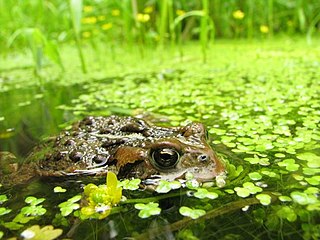
Ecology is the study of the relationships among living organisms, including humans, and their physical environment. Ecology considers organisms at the individual, population, community, ecosystem, and biosphere level. Ecology overlaps with the closely related sciences of biogeography, evolutionary biology, genetics, ethology, and natural history. Ecology is a branch of biology, and it is not synonymous with environmentalism.

An ecosystem consists of all the organisms and the physical environment with which they interact. These biotic and abiotic components are linked together through nutrient cycles and energy flows. Energy enters the system through photosynthesis and is incorporated into plant tissue. By feeding on plants and on one another, animals play an important role in the movement of matter and energy through the system. They also influence the quantity of plant and microbial biomass present. By breaking down dead organic matter, decomposers release carbon back to the atmosphere and facilitate nutrient cycling by converting nutrients stored in dead biomass back to a form that can be readily used by plants and microbes.
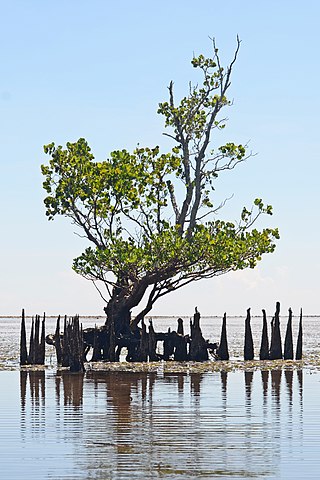
A mangrove is a shrub or tree that grows mainly in coastal saline or brackish water. Mangroves grow in an equatorial climate, typically along coastlines and tidal rivers. They have special adaptations to take in extra oxygen and to remove salt, which allow them to tolerate conditions that would kill most plants. The term is also used for tropical coastal vegetation consisting of such species. Mangroves are taxonomically diverse, as a result of convergent evolution in several plant families. They occur worldwide in the tropics and subtropics and even some temperate coastal areas, mainly between latitudes 30° N and 30° S, with the greatest mangrove area within 5° of the equator. Mangrove plant families first appeared during the Late Cretaceous to Paleocene epochs, and became widely distributed in part due to the movement of tectonic plates. The oldest known fossils of mangrove palm date to 75 million years ago.
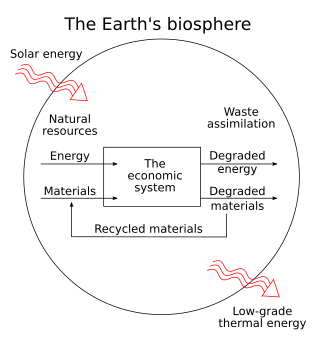
Ecological economics, bioeconomics, ecolonomy, eco-economics, or ecol-econ is both a transdisciplinary and an interdisciplinary field of academic research addressing the interdependence and coevolution of human economies and natural ecosystems, both intertemporally and spatially. By treating the economy as a subsystem of Earth's larger ecosystem, and by emphasizing the preservation of natural capital, the field of ecological economics is differentiated from environmental economics, which is the mainstream economic analysis of the environment. One survey of German economists found that ecological and environmental economics are different schools of economic thought, with ecological economists emphasizing strong sustainability and rejecting the proposition that physical (human-made) capital can substitute for natural capital.
Industrial ecology (IE) is the study of material and energy flows through industrial systems. The global industrial economy can be modelled as a network of industrial processes that extract resources from the Earth and transform those resources into by-products, products and services which can be bought and sold to meet the needs of humanity. Industrial ecology seeks to quantify the material flows and document the industrial processes that make modern society function. Industrial ecologists are often concerned with the impacts that industrial activities have on the environment, with use of the planet's supply of natural resources, and with problems of waste disposal. Industrial ecology is a young but growing multidisciplinary field of research which combines aspects of engineering, economics, sociology, toxicology and the natural sciences.
This glossary of ecology is a list of definitions of terms and concepts in ecology and related fields. For more specific definitions from other glossaries related to ecology, see Glossary of biology, Glossary of evolutionary biology, and Glossary of environmental science.
Information ecology is the application of ecological concepts for modeling the information society. It considers the dynamics and properties of the increasingly dense, complex and important digital informational environment. "Information ecology" often is used as metaphor, viewing the information space as an ecosystem, the information ecosystem.

Environmental resource management is the management of the interaction and impact of human societies on the environment. It is not, as the phrase might suggest, the management of the environment itself. Environmental resources management aims to ensure that ecosystem services are protected and maintained for future human generations, and also maintain ecosystem integrity through considering ethical, economic, and scientific (ecological) variables. Environmental resource management tries to identify factors affected by conflicts that rise between meeting needs and protecting resources. It is thus linked to environmental protection, sustainability, integrated landscape management, natural resource management, fisheries management, forest management, and wildlife management, and others.

Ecosystem services are the many and varied benefits to humans provided by the natural environment and healthy ecosystems. Such ecosystems include, for example, agroecosystems, forest ecosystem, grassland ecosystems, and aquatic ecosystems. These ecosystems, functioning in healthy relationships, offer such things as natural pollination of crops, clean air, extreme weather mitigation, and human mental and physical well-being. Collectively, these benefits are becoming known as ecosystem services, and are often integral to the provision of food, the provisioning of clean drinking water, the decomposition of wastes, and the resilience and productivity of food ecosystems.
Ecocentrism is a term used by environmental philosophers and ecologists to denote a nature-centered, as opposed to human-centered, system of values. The justification for ecocentrism usually consists in an ontological belief and subsequent ethical claim. The ontological belief denies that there are any existential divisions between human and non-human nature sufficient to claim that humans are either (a) the sole bearers of intrinsic value or (b) possess greater intrinsic value than non-human nature. Thus the subsequent ethical claim is for an equality of intrinsic value across human and non-human nature, or biospherical egalitarianism.
Spatial ecology studies the ultimate distributional or spatial unit occupied by a species. In a particular habitat shared by several species, each of the species is usually confined to its own microhabitat or spatial niche because two species in the same general territory cannot usually occupy the same ecological niche for any significant length of time.

Functional ecology is a branch of ecology that focuses on the roles, or functions, that species play in the community or ecosystem in which they occur. In this approach, physiological, anatomical, and life history characteristics of the species are emphasized. The term "function" is used to emphasize certain physiological processes rather than discrete properties, describe an organism's role in a trophic system, or illustrate the effects of natural selective processes on an organism. This sub-discipline of ecology represents the crossroads between ecological patterns and the processes and mechanisms that underlie them. It focuses on traits represented in large number of species and can be measured in two ways – the first being screening, which involves measuring a trait across a number of species, and the second being empiricism, which provides quantitative relationships for the traits measured in screening. Functional ecology often emphasizes an integrative approach, using organism traits and activities to understand community dynamics and ecosystem processes, particularly in response to the rapid global changes occurring in earth's environment.
Ecolinguistics, or ecological linguistics, emerged in the 1990s as a new paradigm of linguistic research, widening sociolinguistics to take into account not only the social context in which language is embedded, but also the wider ecological context, including other species and the physical environment.

Biological organisation is the organisation of complex biological structures and systems that define life using a reductionistic approach. The traditional hierarchy, as detailed below, extends from atoms to biospheres. The higher levels of this scheme are often referred to as an ecological organisation concept, or as the field, hierarchical ecology.
James J. Kay was an ecological scientist and policy-maker. He was a respected physicist best known for his theoretical work on complexity and thermodynamics.
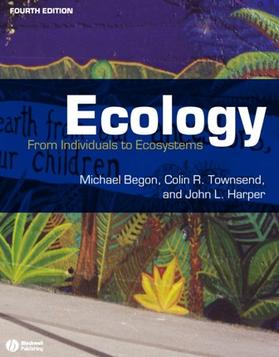
Ecology: From Individuals to Ecosystems is a 2006 higher education textbook on general ecology written by Michael Begon, Colin R. Townsend and John L. Harper. Published by Blackwell Publishing, it is now in its fourth edition. The first three editions were published by Blackwell Science under the title Ecology: Individuals, Populations and Communities. Since it first became available it has had a positive reception, and has long been one of the leading textbooks on ecology.

Ecological dominance is the degree to which one or several species have a major influence controlling the other species in their ecological community or make up more of the biomass. Both the composition and abundance of species within an ecosystem can be affected by the dominant species present.

Deep ecology is an environmental philosophy that promotes the inherent worth of all living beings regardless of their instrumental utility to human needs, and the restructuring of modern human societies in accordance with such ideas.
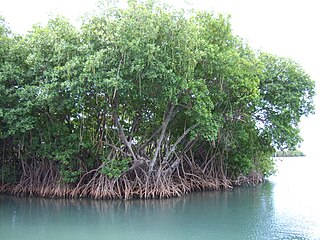
Mangrove ecosystems represent natural capital capable of producing a wide range of goods and services for coastal environments and communities and society as a whole. Some of these outputs, such as timber, are freely exchanged in formal markets. Value is determined in these markets through exchange and quantified in terms of price. Mangroves are important for aquatic life and home for many species of fish.

Ecosystem health is a metaphor used to describe the condition of an ecosystem. Ecosystem condition can vary as a result of fire, flooding, drought, extinctions, invasive species, climate change, mining, fishing, farming or logging, chemical spills, and a host of other reasons. There is no universally accepted benchmark for a healthy ecosystem, rather the apparent health status of an ecosystem can vary depending upon which health metrics are employed in judging it and which societal aspirations are driving the assessment. Advocates of the health metaphor argue for its simplicity as a communication tool. "Policy-makers and the public need simple, understandable concepts like health." Some critics worry that ecosystem health, a "value-laden construct", can be "passed off as science to unsuspecting policy makers and the public." However, this term is often used in portraying the state of ecosystems worldwide and in conservation and management. For example, scientific journals and the UN often use the terms planetary and ecosystem health, such as the recent journal The Lancet Planetary Health.
References
- Abe, Joseph M.; Dempsey, Patricia E.; Bassett, David A. (1998). Business Ecology: Giving Your Organization the Natural Edge. Boston: Butterworth-Heinemann.
- Abram, Stephen (2000). "What's Ahead for 2000? Prognostications from 13 Information Industry *Leaders" . Retrieved August 6, 2002.
- Baskin, Ken (1998). Corporate DNA: Learning from Life. Woburn: Butterworth-Heinemann.
- DeLong, J. Bradford (2000). "Why the Valley Way is Here to Stay". Archived from the original on September 10, 2001. Retrieved August 6, 2002.
- Cohen, Stephen; DeLong, J. Bradford; Zysman, John (March 7, 2000). "Tools for Thought: What is New and Different about the E-conomy". Archived from the original on June 25, 2010. Retrieved June 20, 2010.
- Dar, Vinod K. (1999). "The Web as Business Ecology". Archived from the original on August 20, 2002. Retrieved August 6, 2002.
- Gruber, Tom. "2021: Mass Collaboration and the Really New Economy". Archived from the original on September 29, 2007. Retrieved November 1, 2003.
- Hutchinson, Colin (1995). Vitality and Renewal: A Manager's Guide for the 21st Century. London: Adamantine Press.
- Kaminsky, Ilene (2000). "ASPs - Creating a New Business Ecology". Archived from the original on June 5, 2002. Retrieved August 6, 2002.
- Gaw, Jonathan (1999). "UC Irvine Accepts Taco Bell Endowment". Los Angeles Times. Retrieved February 16, 2020.
- Mangrove (2001). "Our Vision - Understanding the Ecology of Business". Mangrove Software, Inc. Archived from the original on September 16, 2002. Retrieved August 6, 2002.
- Moore, James F. (May–June 1993). "Predators and prey: A new ecology of competition". Harvard Business Review. pp. 75–86.
- Moore, James F. (1996). The Death of Competition: Leadership & Strategy in the Age of Business Ecosystems . New York: HarperBusiness. ISBN 0-88730-850-3.
- Moore, James F. (2006). "Business ecosystems and the view from the firm" (PDF). The Antitrust Bulletin. 51 (1): 31–75. doi:10.1177/0003603X0605100103. S2CID 168156432.
- Montague (1993). "Ecology of competition". Montague Institute. Archived from the original on July 9, 2003. Retrieved November 1, 2003.
- Muegge, Steven (2013). "Platforms, communities and business ecosystems: Lessons learned about entrepreneurship in an interconnected world". Technology Innovation Management Review. 3 (February): 5–15. doi: 10.22215/timreview/655 . Archived from the original on 2018-11-08. Retrieved 2013-09-03.
- Reinhardt, Andy (2000). "The New Intel". Archived from the original on June 23, 2002. Retrieved August 7, 2002.
- Senge, Peter (1990). The Fifth Discipline: The Art & Practice of the Learning Organization. New York: Currency/Doubleday.
- Townsend, Amy K. (2006). Green Business: A Five-Part Model for Creating an Environmentally Responsible Company. Atglen, PA: Schiffer Publishing.
- Townsend, Amy K. (2009). Business Ecology: Why Most Green Business Practices Don't Work... and What to Do about It. Atglen, PA: Schiffer Publishing.
- Yorque, Ralf; Walker, Brian; Holling, C. S.; Gunderson, Lance H.; Folke, Carl; Carpenter, Stephen R.; Brock, William A. (2002). Gunderson, Lance H.; Holling, C.S. (eds.). Toward an Integrative Synthesis. pp. 419–438.
{{cite book}}:|work=ignored (help)